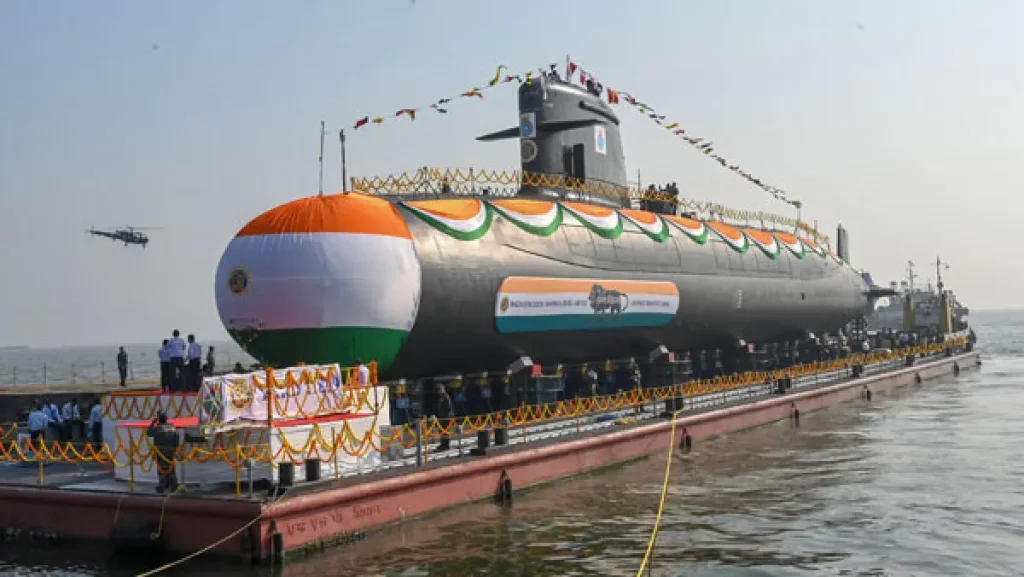Following its decision to deny entry to a Chinese submarine and research vessel, Sri Lanka welcomed the arrival of the Indian Navy submarine INS Karanj on February 3rd, just ahead of its Independence Day celebrations.
The acceptance of INS Karanj signifies a diplomatic victory for India. However, the potential threat of Chinese submarine activities in the Indian Ocean remains a concern, particularly with Beijing’s ongoing construction of a significant naval base in Bangladesh.
The Sri Lankan Navy announced the arrival of INS Karanj, stating that while the submarine is stationed in the island nation, it will engage in a submarine awareness program, with the crew also exploring tourist attractions in the country.
INS Karanj belongs to the Kalvari-class of diesel-electric submarines, based on the French Scorpene class submarines. Designed by the French naval group DCNS and manufactured by Mazagon Dock Limited in Mumbai, the submarine measures 67.5 meters in length, accommodates a crew of 53, and is commanded by Commander Arunabh. It is scheduled to depart from the Sri Lankan port on February 5th.

This port call by the Indian submarine comes amidst Sri Lanka’s imposition of a year-long moratorium on foreign research vessels operating in its waters, which began on January 1st.
This move is viewed as a significant diplomatic and strategic success for India, considering concerns over Chinese research vessels conducting surveys in the Indian Ocean Region (IOR), potentially aiding Chinese submarine navigation through crucial maritime routes.
However, geopolitical dynamics in the IOR are becoming increasingly complex, with the new Maldivian President, Mohamed Muizzu, allowing a Chinese research vessel to dock in Male, despite India’s objections.
Sri Lanka’s alignment with China has been evident since Beijing secured a 99-year lease of Hambantota Port. Concerns persist in India over the use of Sri Lankan and Maldivian ports by Chinese vessels for military purposes under the guise of marine exploration.
Meanwhile, China’s expanding presence in the Bay of Bengal through its submarine diplomacy, highlighted by the construction of the BNS Sheikh Hasina Naval Base in Bangladesh, poses challenges for India’s maritime security.
The base, capable of accommodating six submarines and eight warships, signifies China’s strategic ambitions in the region and raises concerns about its military presence close to India’s Eastern Naval Command.
India’s strategic interests in maintaining dominance in the Bay of Bengal face challenges from China’s growing maritime influence facilitated by countries like Bangladesh.




